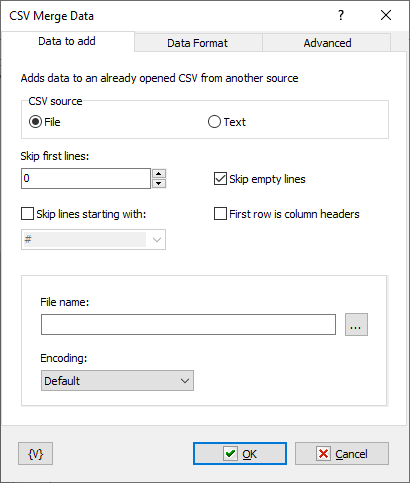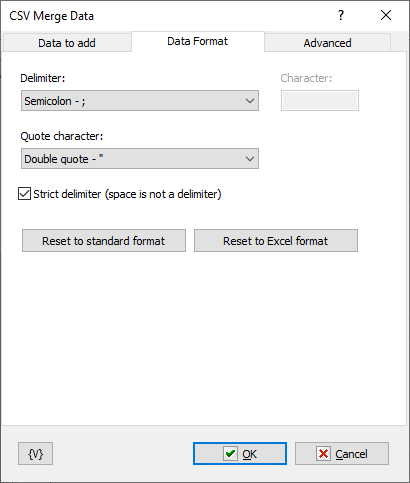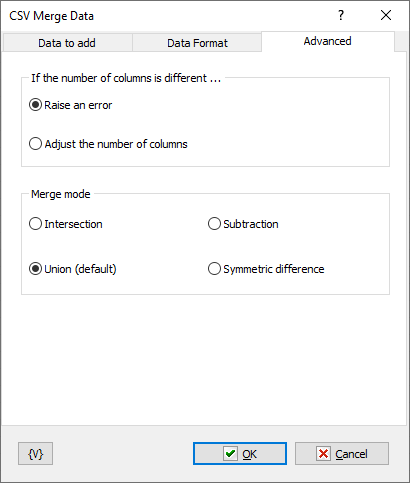This action allows you to merge two CSV data arrays into one. Data merging is done by adding data from another source: file, variables, or explicitly specified data to the already opened CSV array.
Data to add

Data to be added to already opened CSV data.
CSV source
There are two options to choose from:
•File: Read data from a file. Specify the file name below and select the encoding format. The most popular encodings are available for selection.
•Text: Load data directly from the specified text. You can provide the text explicitly or using variables.
If CSV data has been loaded previously in the previous task steps, the data will be overwritten. You can only use one set of CSV data within one task.
Skip first lines
Specify how many lines need to be ignored from the beginning of the text.
Skip empty lines
Enable this switch if you want to ignore empty lines. This parameter is enabled by default.
Skip lines starting with
Ignore comments. There is no standard for comments in CSV texts. The action will consider a line as a comment if it starts with the specified combination of characters. You can choose an option or specify your own combination.
First row is column headers
The CSV text may start with a row of column headers. Enable this switch if the first row of the data array is the header.
Data format

Specify the format of the CSV data: delimiter, quote character.
Note that if the "Strict delimiter" switch is not enabled, spaces are also considered delimiters. And all fields containing spaces must be enclosed in quotes.
Reset to standard format
Sets the standard parameters:
•Delimiter: Comma (,)
•Quotes: Double quotes (")
•Non-strict delimiter (spaces are also considered delimiters)
Reset to Excel format
Sets the parameters used by MS Excel by default:
•Delimiter: Semicolon (;)
•Quotes: Double quotes (")
•Strict delimiter.
Advanced

If the number of columns is different
Choose the action to take if the number of columns differs. The default action is to generate an error.
Merge mode
There are four modes:
•Intersection - elements that are in both lists
•Union - all elements from both lists. Default option
•Subtraction - elements from the 1st list and missing from the 2nd list (1-st list minus 2-nd list)
•Symmetric difference - the union minus intersection
![]() Related Topics
Related Topics
Note: This feature is available for Business license only |